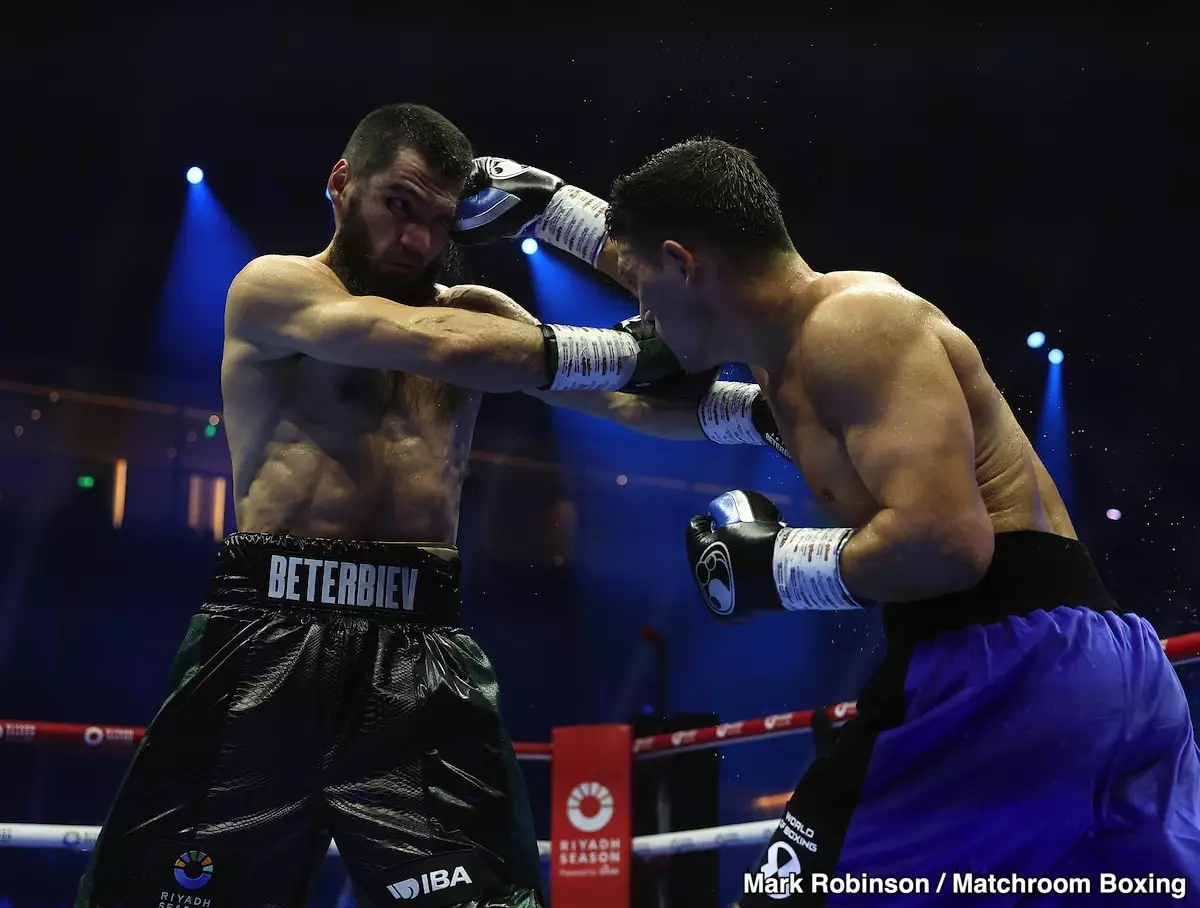The recent showdown between Artur Beterbiev and Dmitry Bivol marked a significant chapter in the light heavyweight division’s history, one that showcased not only brute strength but also the subtleties of boxing strategy. Beterbiev emerged victorious by a majority decision, with some judges scoring it 115-113 in favor of the IBF, WBC, and WBO champion. While Bivol’s promoter, Eddie Hearn, expressed his belief that his fighter was unjustly treated, a closer analysis of the fight reveals a different narrative: a battle of endurance, pressure, and tactical adaptation.
At the outset, the bout unfolded in a relatively balanced manner. Bivol, known for his footwork and defensive style, held strong against Beterbiev’s aggressive approach. His initial strategy appeared to pay off, allowing him to establish a rhythm. Yet, the calmness was deceptive. While Bivol’s early performances suggested control, Beterbiev was biding his time, gauging Bivol’s responses and preparing to unleash his power punches.
Teddy Atlas, a veteran trainer and analyst, expressed that he scored the match with a slight edge for Beterbiev. He noted that while Bivol had an effective defensive strategy, Beterbiev’s relentless pursuit would later tilt the fight’s momentum in his favor. Atlas observed that Bivol’s combinations, particularly early on, needed to be more effective if he hoped to maintain control throughout the match.
The dynamic of the bout changed dramatically beginning in the seventh round. Bivol had come out swinging, landing combinations that seemed to rejuvenate him. However, Beterbiev’s response was swift and devastating. Atlas pointed out that once Beterbiev started landing body shots, it was as if he had flipped a switch. Bivol, who had been dictating the pace, suddenly found himself on the back foot, struggling to keep pace against a fighter who feeds on adversity.
Beterbiev’s calculated aggression paid dividends. He capitalized on Bivol’s fatigue and began to impose his own game plan. Atlas’s insights into this pivotal moment underscore the importance of adaptability in boxing—Bivol had no choice but to shift from offensive tactics to a defensive shell, which ultimately played into Beterbiev’s hands.
Endurance vs. Aggression: The Final Rounds
As the championship rounds approached, the disparity in stamina became glaringly evident. Beterbiev showcased not only his power but also a shrewd understanding of pacing. Atlas remarked on how Beterbiev, almost 40 years old, was not the relentless attacker of his youth; instead, he fought wisely, saving energy for critical moments. This contrast in styles became particularly pronounced in rounds 10 through 12, where Beterbiev seemed to thrive on the exhaustion of Bivol, delivering punishing blows that echoed throughout the arena.
Atlas highlighted how crucial these final exchanges were. Bivol, who had initially dazzled with his skillful footwork and ability to evade punches, appeared worn down and on the verge of surrender. Beterbiev’s relentless pursuit reflected a predatory instinct, one that is often a hallmark of successful champions. The way he trapped Bivol with calculated pressure demonstrated not only physical superiority but also an overwhelming psychological edge.
The Aftermath: Analyzing the Judges’ Scores
The official scorecards, which revealed a majority decision in favor of Beterbiev, sparked debates in the boxing community. Atlas noted that while he agreed with the outcome, he found one judge’s score of 116-112 to be overly generous towards Beterbiev. This discrepancy invites a broader discussion about judging in boxing—a field often clouded by subjectivity and varying perspectives on aggression, technique, and control.
Moreover, Hearn’s claims of a ‘robbery’ highlight the delicate balance in promotional pressures and the complexities of public perception in the sport. If Hearn had openly conceded Bivol’s struggle against Beterbiev’s pressure, it could risk diminishing Bivol’s appeal as a world-class athlete.
The contest between Beterbiev and Bivol serves as a textbook example of how fights can pivot based on stamina, strategic timing, and adaptability. It reaffirms the idea that boxing is as much a mental contest as it is a physical one. With Beterbiev’s victory, the light heavyweight division sees a champion who not only possesses raw power but also the intellectual prowess to dissect opponents in the ring. As discussions unfold about the interpretation of this match, one thing remains clear: Beterbiev’s name has solidified its place in boxing history, representing a blend of power, strategy, and uncompromising determination.

